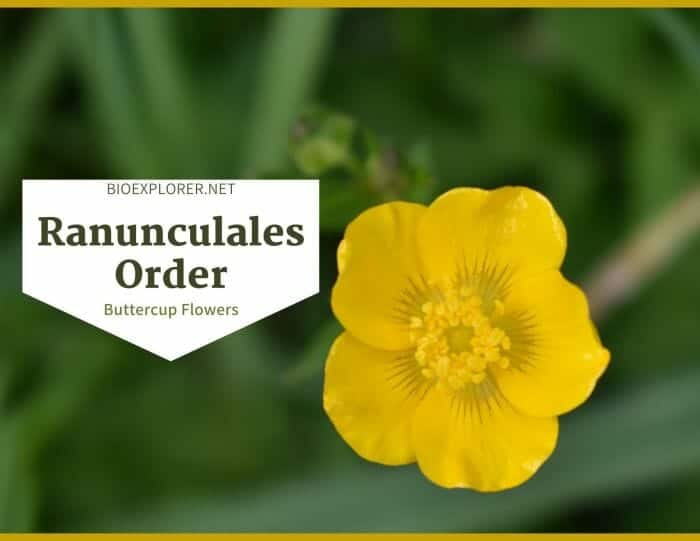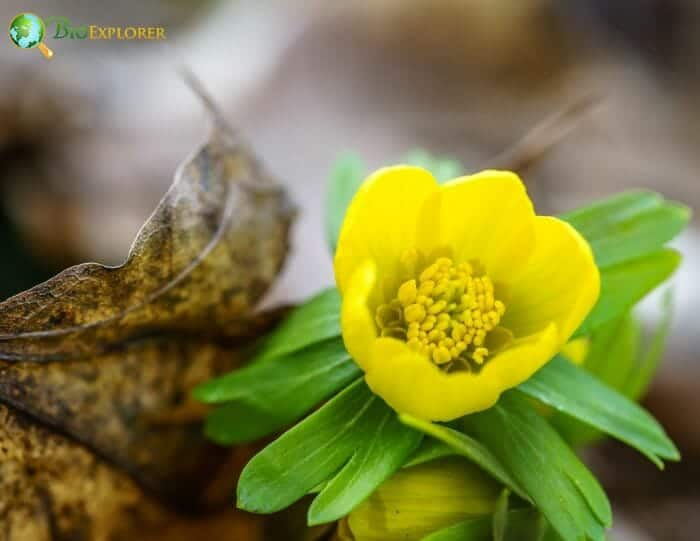Ranunculales is the order of angiosperms with a worldwide distribution. The Ranunculales species are peripheral eudicots with spiral leaves, three openings (colpiWhat is colpi?An oblong-elliptic aperture or furrow in the exine of a pollen grain running from one pole to another with the length/breadth ratio greater than 2. Singular form - colpus.) in the pollen, and spectacular floral diversity. The Ranunculales flowers are generally bisexual and are considered simple. The buttercup flowers are the famous example species of Ranunculales.
Table of Contents
Ranunculales Families
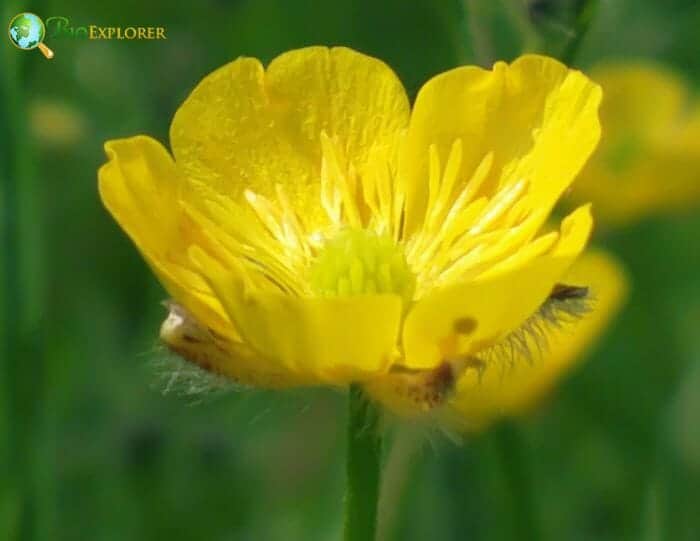
Ranunculales is also called the “Buttercup order” with 7 families, almost 199 genera, and 4,510 members[1].
- Ranunculaceae (Buttercup family)
- Berberidaceae (Barberry family)
- Menispermaceae (Moonseed family)
- Lardizabalaceae (Chocolate vine family).
- Circaeasteraceae
- Papaveraceae (Poppy family)
- Eupteleaceae
Ranunculales Distribution
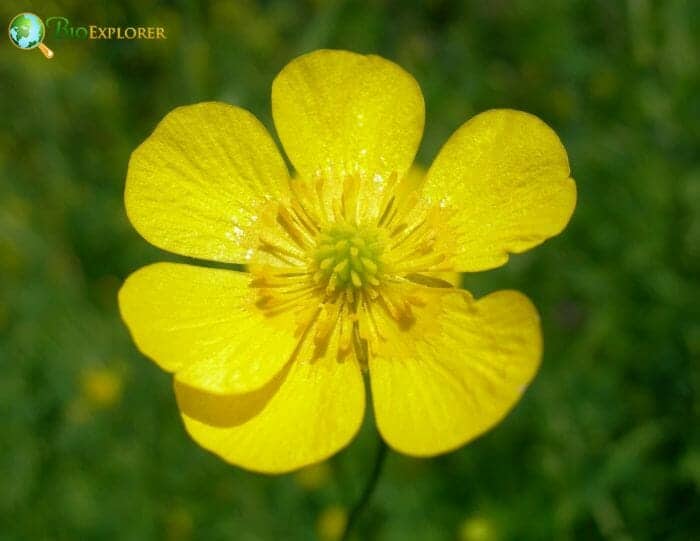
Plants of Ranunculales are found in diverse habitats and are found worldwide. However, most Ranunculales taxa are dominant and diverse in the tropics, Southwest China, and the Himalayas.
- The Buttercup family, Ranunculaceae (62 genera and 2, 252 species), thrive worldwide but is prevalent in cold and temperate regions.
- The Berberidaceae (17 genera and 650 species)[2] or the Barberry family are naturally found in the temperate zones of the Northern Hemisphere, principally in Asia.
- The Menispermaceae (75 genera and 520 species) plants are found in the tropics and subtropics regions.
- The species of Circaeasteraceae (2 genera and 2 species[3] ) are growing from the northwestern Himalayas to northwestern China.
- Euptelaceae are found in temperate Southeast Asia.
- The Papaveraceae (42 genera and 660 species[4] ) are mostly in north temperate to subtropical regions. The species are most diverse in western North America and temperate Eurasia. However, there are also a few species in eastern Australia and Africa. Some familiar genera are also found in the United States and Canada.
- Species of Lardizabalaceae (9 genera and 50 species)[5] are Asiatic. They are primarily found in the Himalayas, Vietnam, Japan, and Korea. In addition, though, the two genera (Boquilla and Lardizabala) are growing in Chile.
Ranunculales Characteristics
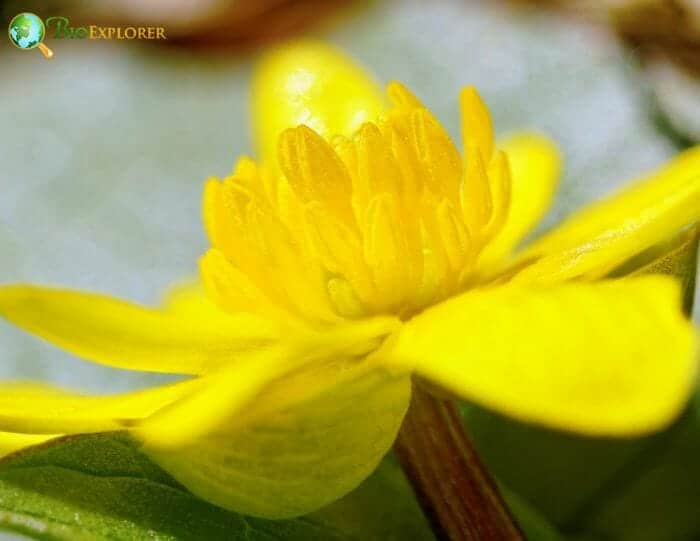
Ranunculales members have the following characteristics:
- Plant type: Ranunculales includes herbs to herbaceous woody species; vines, shrubs, and sometimes trees. Species are peripheral eudicots. They have two seed leaves upon germination. Ethereal cells are absent. This is a common characteristic among the basal flowering plants‘ orders.
- Stem: The members are herbs to herbaceous woody.
- Leaves: The leaves are simple or compound, lobed or unlobed. The leaves are spiral, and the lamina is serrate. The petiole bundles are annular.
- Flowers and inflorescences: The flowers are generally bisexual, except genus Thalictrum[6] (Ranunculaceae) and simple. They can be solitary or in inflorescences of cymose or racemose.
- Sepals and petals: The perianth can be absent or present. If present, perianth can be bipartite (sepals and petals differentiated) or unipartite (either sepaloid or petaloid). Flowers have spectacular floral diversity. Almost all species (except Euptelea) have petals. These petals appeared to have evolved from the staminodes and not from bracts.
- Stamens and carpels: The stamens are numerous and sometimes multiwhorled. The pollen of the members usually has three openings (colpi), not 1. The flower’s female reproductive organs or the carpels are also typically numerous and mostly unfused.
- Ovary and fruit: The ovary is superior. The fruit is a berry, follicle, achene, dry samaras, or capsule.
- Seeds: The seeds are generally tiny with minute and endospermousWhat is endospermous?An embryonic nutritive tissue formed during double fertilization by the fusion of a sperm with the polar nuclei. embryos.
Ranunculales Flowers and Reproduction
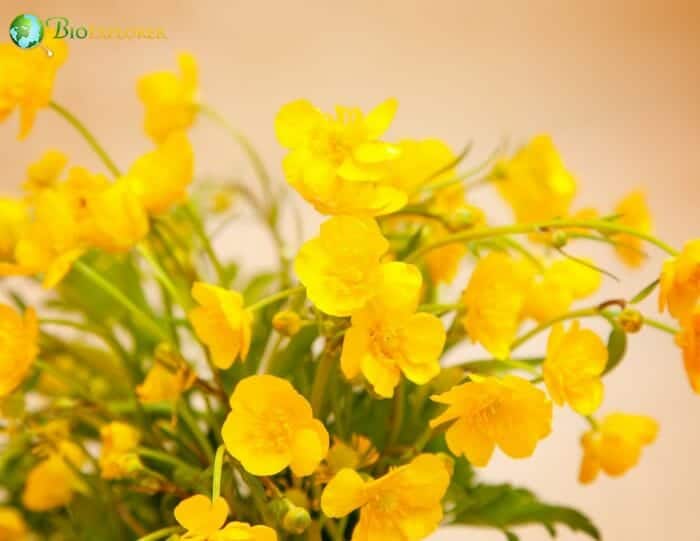
The floral organs of Ranunculales greatly vary in form, size, color, and modes of pollination.
Ranunculaceae flowers are considered simple because the morphology of the floral parts is characterized by having unspecified numbers. Furthermore, the petals, sepals, stamen, and pistil are separated individually and attached below the ovary (superior). Buttercups lack a floral pattern. Some species are regular; others are irregular.
Most members are bisexual. Petals are 0-23[7] and are often colorful. Buttercups have many simple pistils at the flower’s center instead of the advanced plant families having only a single pistil. Some buttercup species also have hooked tips on the pistils.
The barberry flowers are bisexual and radially symmetrical. The flowers can be clustered, forming branching inflorescence or solitary. The ovary is superior with 1 carpel and 6 stamens. Members have 6-9 petals and 4-6 petaloid sepals.
The showy flowers of Papaveraceae are either solitary or organized in a branching array. The flowers can be radially or bilaterally symmetrical. Petals of the poppy family are 4 or more, and sepals are 2 or 3. The lobed stigma can have 0-1 style, and the stamens are 6 or more. The seeds are dry capsules having many seeds.
Menispermaceae flowers are frequently minute and never showy. Color is greenish, white, or cream with axillary or terminal inflorescence in fascicles, cymes, racemes, or panicles. The ovary is superior, and the perianth is attached below the gynoecium with segments distinct or fused. There are usually 6 sepals and 0 or 6 petals.
Pollination in Ranunculales[8] is diverse. Insect pollination is considered ancestral to this order. However, the nectar from the flowers of some species invites diverse pollinators. The bumblebees pollinate most species, but pollination by hawkmoth also occurs to some degree. Furthermore, hummingbirds are also considered pollinators.
Additionally, flowers without perianth with long anthers rich with pollen are wind-pollinated[9]. On the other hand, fly-pollination[10] occurs to nectar-producing Ranunculales species having small flowers with petals.
Ranunculales Family Differences
Ranunculaceae
- The leaves are simple or compound and alternate. Often, the leaves are exstipulateWhat is exstipulate?Without stipules; Stipule is a small structure of appendage found at the base of some leaf petioles..
- Plants have 3 to 15 sepals.
- The flowers can be solitary or arranged to cymose or racemose.
- Flowers have 0 to 23 actual petals. Usually, nectaries are present.
- The pistils are apocarpous. There are 3- numerous simple pistils per flower. Some species have a hook at the pistil’s tip.
- The ovary is superior, with the floral parts all independently below it.
- Most have bisexual flowers.
- The fruit is mostly a follicle or achene. The seeds are small with a minute, endospermous embryo.
Berberidaceae
- Leaves of the members are evergreen or deciduous, simple or compound, lobed or unlobed. The leaves possess entire, toothed, or spinolous margins.
- The flowers can be solitary or in cymose, racemose, or paniculate inflorescence. Bracts can be present or absent.
- The flowers are perfect and hypogynous.
- There are 4-6 petaloid sepals.
- Species have 6-9 petals. Nectaries are present.
- There are 6 stamens, 1 pistil, and 1 carpel in a flower.
- The fruit is a berry. The seeds possess a rudimentary embryo.
Menispermaceae
- The leaves are primarily simple and alternate. The palmate veins are usually present, and the petioles are inflated in the ends. Plants have no stipules.
- The small flowers are mainly arranged to cymose or paniculate.
- There are usually 6 sepals, often in whorls.
- The petals are absent or present. It is usually 3 or 6 in 1 or 2 whorls if present. Generally, the petals are free.
- The flowers are unisexual.
- The ovary is superior with 3 to 6 free carpels.
- The fruit is a drupe with horseshoe-shaped or reniform seeds.
Lardizabalaceae
- The plants possess alternate leaves without stipules (except Lardizabala). Usually, leaves are palmately compound.
- Most flowers are pedicellateWhat is pedicellate?Borne on a pedicel; a flower characterized by having a stalk is also known as pedunculate or pedicellate; opposite is sessile (i.e., no stalk); (having a stalk) with inflorescences axillary racemes, which are very seldom solitary.
- Flowers can be unisexual or bisexual.
- There are 3-6 often petaloid sepals in 2 whorls.
- Petals are mostly 6 with nectaries. However, petals are reduced and smaller than the sepals. It is often absent in some species.
- There are 3 to 9 free carpels, numerous in Sargentodoxa.
- The fruits can be of fleshy follicles or berry type. The seeds are not arillate with the small and straight embryo.
Circaeasteraceae
- The leaves are fan-shaped and dichotomously veined.
- The members have a very long hypocotyl and very short stem.
- The inflorescence is thyrseWhat is thyrse?A panicle-like inflorescence which has one main indeterminate axis and many lateral axes which are determinate (example: Lilac). There are 2 to 3 flowers with longer pedicels at the center of the inflorescence. The flowers without pedicels or very short pedicels surround the flowers with longer pedicels.
- The flowers are regular or irregular, small, simple, and green.
- The plants have 2 to 3 tepals.
- The members are bisexual and hypogynous.
- Members can have 1-3 carpels.
- The fruit is non-fleshy, an achene. Seeds are numerous with a straight embryo.
Papaveraceae
- The leaves are alternate along the stem. The leaf blades are often lobed. Latex is contained in the leaves. Stipules are absent.
- The flowers are showy. They can be of a solitary type or in a branching array arrangement. They are odorless.
- The plants consist of 2 to 3 sepals.
- Petals are 4 or more, separated or fused.
- The flowers are hermaphrodites.
- The fruit is a dry capsule with many seeds.
Eupteleaceae
- The leaves are simple, alternate, and possess marginal tooths.
- Euptela flowers are arranged in compressed racemes.
- The flowers are bisexual.
- Flowers are characterized by the absence of sepals and petals.
- Flowers are nectarless.
- Species have prominent stamens and 5 to 13 minute free carpels.
- The fruits are dry samaras (winged achene).
Ranunculales Example Species
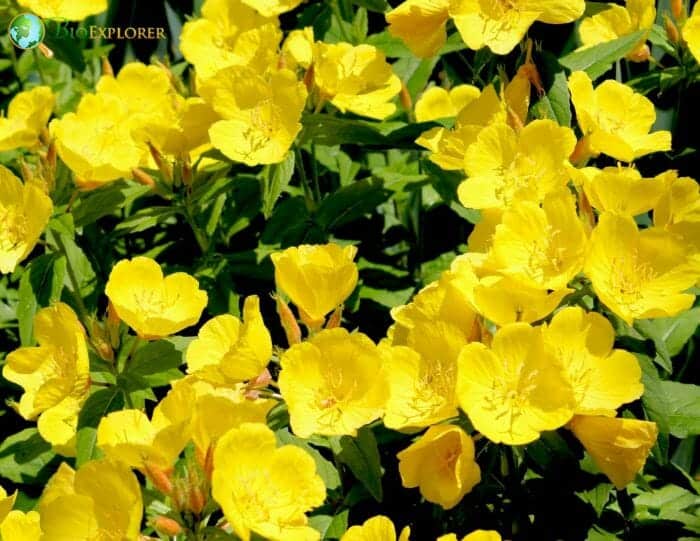
The following are examples of species under Ranunculales:
- Sagebrush buttercup[11] – The plant is noticeable because of its vibrant colored flowers. Still, it is considered toxic to animals and people.
- Creeping buttercup[12] – The flower is common in gardens and yards. The variation with compound flowers is cultivated as ornamental flowers.
- Darwin’s barberry[13] – The plant is a typical garden and hedging shrub. The fruit is also edible. This species is also of great medicinal value[14].
- California barberry[15] – The shrub is an ornamental plant used for landscaping.
- Canadian moonseed[16] – The fruit is highly poisonous. However, other parts have medicinal uses with caution[17].
- Chocolate vine[18] – The sausage-shaped pod fruit is edible.
- Corn poppy[19] – The plant is commonly planted in gardens.
- Bleeding heart[20] – The plant is best for woodland gardens and shaded borders. This species has been considered a garden favorite for many years.
- Guduchi[21] – The Guduchi plant has been consumed as traditional medicine.
- Dead man’s fingers[22] – The fruit is edible. The tree is also an ornamental plant.


